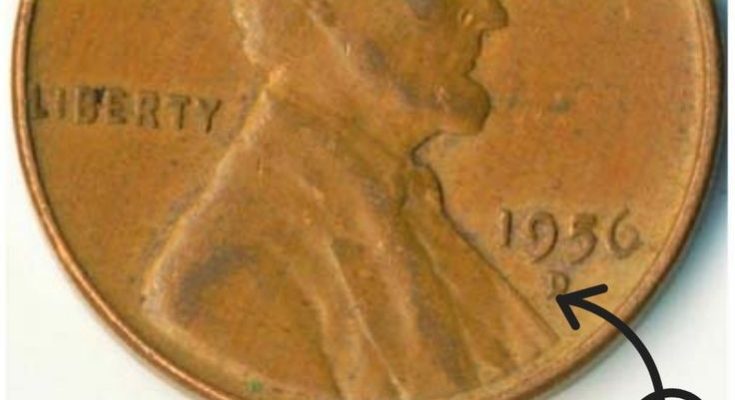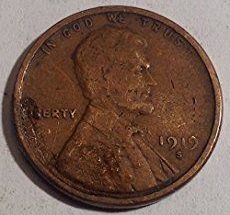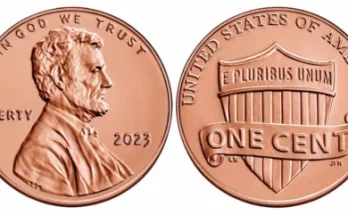 Have you discovered a 1956 wheat penny? If you are reading this, you probably inherited some coins; you are a collector or have come across some rare pennies that may be attractive to collectors.
Have you discovered a 1956 wheat penny? If you are reading this, you probably inherited some coins; you are a collector or have come across some rare pennies that may be attractive to collectors.
Read on for further information on 1956 wheat pennies and their worth. These one cent pieces were produced years ago and new ones are still being produced today.
However, there is a keen interest in the 1956 penny.
1956 was quite the year for the US, and the Lincoln cent launch was just one part of the happenings that year.
How Many 1956 Lincoln Wheat Pennies Were Minted?
Production was about 420,745,000 of the 1956 minted Philadelphia penny without the mint mark, 1,098,201,100 of the 1956 D wheat penny with the ‘D’ mint mark, and 669,384 proof coins.
With the numbers of coins produced, you can tell that it’s not rare to come across them, but variations in design and quality make the coins special and valuable, and you can sell them for a considerable markup on face value.
Was There A 1956 S Wheat Penny Minted?
You may have noticed that there are no 1956 S wheat pennies. San Francisco mint didn’t produce any Lincoln wheat’s this year, possibly due to the 1953 recession.
What Does A 1956 Wheat Penny Look Like?
The standard Lincoln wheat penny has the bust of Abraham Lincoln, and to the left, the name ‘Liberty’ is engraved.
On the opposite side is the year 1956 and on the top of the coin reads ‘In God We Trust.’
On the other side of the coin, it reads ‘The United States of America’ and ‘One Cent.’ On the left and right edges, stalks of wheat explain the phrase wheat penny and the Latin phrase ‘E Pluribus Unum.’
How Much Is A 1956 Wheat Penny Worth?
The penny’s worth ranges from a few cents to hundreds of dollars. Some of the factors adding value to the 1956 Wheat penny include:
Mint Errors
The presence of a minting error. Some of the coins have a shadow ‘D’ on the original ‘D’.
The other ‘D’ results from a double striking, which was an error. The letter may be visible by the naked eye or by the use of a coin microscope.
Circulated or Uncirculated
If the coin has circulated, has not been cleaned, and is without damage, it can be sold for about three cents to upwards of $5, which is more than its face value.
Damaged Coins
On occasions that it is damaged, then it goes for two cents each. Damage refers to bends, dents, and holes or on circumstances when it is cleaned.
How Can I Determine The Value Of My Coins?
There are a couple of reasons that play a key role in determining the value of the 1956 penny. Those factors are:
Coin Condition
Whether it is circulated or uncirculated, circulated cents have minimal value, while the uncirculated ones carry more value. Circulated pennies will have more damage, which lowers their value.
Errors From Minting
Presence of obvious errors. The errors may be visible under magnification or by the naked eye. The errors add value to the coins when selling them.
Presence of extra copper fragments on the surface. A clear sign of irregularities during the minting process. They may be present near the mintmark or anywhere else on the faces.
Unusual strike marking from a die or planchet. The unusual marking or mistakes will add value.
Mint Location
Where exactly was the coin made? The 1956 Lincoln cents either come from the Philadelphia mint or the Denver mint.
Are Uncirculated 1956 Pennies More Valuable?
Uncirculated pennies have never been used as money. These types of pennies can be bought from collectors or dealers or can also be inherited.
The uncirculated pennies are worth more. 1956 doubled die pennies sell for about $3 to more than $10. 1956 off-center pennies range between $3 to more than $5.
Repunched mintmark pennies goes for about $3 or more and a clipped planchet penny goes for $10 or more.
Deciding What Your 1956 Wheat Cent Is Worth
Date & Mintmark
Identification of the date and the mintmark – all coins produced have the year engraved on the coin.
The Philadelphia 1956 wheaties have no mint mark on them, while the Denver’s have the ‘D’ stamped on the coins under the date. The boldness of the design can be used to gauge the conditions in which the penny was preserved.
The Philadelphia coins were less in number compared to the Denver 1956 cents produced in larger numbers. The coins will have Lincoln’s features with bold markings, sharp lettering, and reverse wheat ears.
Condition & Tone
Judging the coin’s condition to determine the value- the grade will range from heavily worn-out faces and edges to uncirculated coins that are not worn at all.
The naked eye can be used to assess the condition, but most collectors or graders use a magnifying glass to identify the finer unique details on the Lincoln pennies.
The wheat penny’s toning state will fall under original luster, moderate toning, and toned brown.
Exposure of the copper to air causes the toning. The more circulated the penny, the darker it appears, while in some cases, wear doesn’t influence toning.
Lincoln’s temple and ears are a major area to look at as they affect the penny’s value.
There are highs and lows between the temple and the ear. The areas can be inspected for metal texture and luster.
Observing the coin in direct or open light at different angles will help determine the overall condition, influencing its value.
Errors & Design Flaws
Special qualities to add or lower the wheat penny’s value- the metals undergo punching of the blank planchet’s required details.
During this process, errors may occur while stamping, and the mistake is recorded on the surface.
Some of the markings can be seen easily, while others may require taking a closer look to see them clearly.
If there were a misalignment, it would be noticeable on the coin as some details may be left out.
Some of the mistakes on the coin will make it more valuable. It may have machine doubling, or it may be value doubling, and the difference is hard to note.
However, this is not that confusing to the coin graders as it may or may not influence its value.
Conclusion
Being in possession of old wheaties may prove useful if you can make some cash by selling them. Some of the coins can sell for a low price, and others may fetch you some good money.
If you have a 1956 Wheat penny, you should probably make a point of seeing if it is worth more money than its face value.
More Lincoln Wheat Cents 1909 – 1958
1909, 1910, 1911, 1912,1913, 1914, 1915, 1916, 1917, 1918, 1919, 1920, 1921, 1922, 1923, 1924, 1925, 1926, 1927, 1928, 1929, 1930, 1931, 1932, 1933, 1934, 1935, 1936, 1937, 1938, 1939, 1940, 1941, 1942, 1943, 1944, 1945, 1946, 1947, 1948, 1949, 1950, 1951, 1952, 1953, 1954, 1955, 1956, 1957, 1958.






